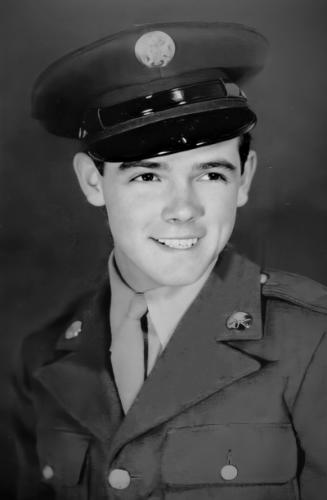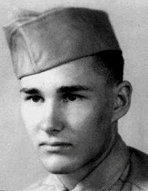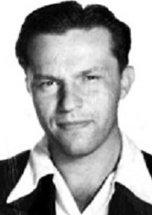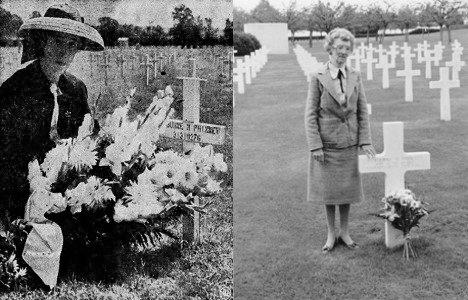
copyright © Wartime Heritage Association
Website hosting courtesy of Register.com - a web.com company
Wartime Heritage
ASSOCIATION
Remembering World War II
Wimburne Mitchell Phinney


Name:
Wimburne Mitchell Phinney
Rank:
Corporal
Service Number:
31310276
Service:
HQ Company, 2nd Battalion,
116th Infantry Regiment,
29th Infantry Division, US Army
Awards:
Purple Heart
Date of Birth:
March 15, 1923
Place of Birth:
South Farmington, Annapolis Co., NS
Date of Enlistment:
April 13, 1943
Age at Enlistment:
20
Place of Enlistment:
Boston, Massachusetts
Address at Enlistment:
Middlesex Co., Massachusetts
Height:
5 feet, 8 inches
Complexion:
Ruddy
Eyes:
Brown
Hair:
Brown
Date of Death:
October 7, 1944
Age:
21
Cemetery:
Henri-Chapelle American Cemetery, Belgium
Grave:
Plot B, Row 11, Grave 50
Wimburne Mitchell Phinney was the son of Henry Maxwell Phinney (1899-1964) and Elizabeth Johnston
(Mitchell) Phinney (1904-1995). His father was born in Nova Scotia; his mother – in England. He had two
brothers, James Norval (1927-2019) and Keith L. (1924-2016) and a sister Maxine Elizabeth Phinney (1928-
2012).
The family immigrated to the US, and moved to Burlington, Massachusetts for a time before settling in
Melrose, Mass. They landed in Boston, Mass. on the SS Yarmouth on May 11, 1928. All four children
attended Melrose High School. It was noted in the high school annual for Wimburne's senior year that he
wanted to join the British Royal Air Force. He was still a Canadian citizen at the time. His father worked as
a carpenter and general contractor. The family was living at 160 Main Street in Melrose in 1940.
Wimburne was a carpenter's apprentice at the time of his enlistment in April 1943, working for his father.
He was training with Company D of the 27th Infantry Training Battalion at Camp Croft in South Carolina in
September of 1943 when he applied for US citizenship in Spartanburg, SC. The 27th Battalion’s D Company
trained cooks, armorers, artificers and buglers. Wimburne Phinney was a bugler.
Corporal Phinney's military occupational specialty (MOS) is recorded as 803, field musician, meaning he was
undoubtedly the company bugler. In practice, he would have mostly been a messenger/runner and
operational support for the battalion. Other records specify his was a signalman and a radio operator.
He was sent to Europe after his basic military training and on September 4, 1944 was transferred from the
replacement depot to the Headquarters Company, 2nd Battalion, 116th Infantry which was then attacking
Brest, France.
The 29th Infantry Division trained in Scotland and England for the cross-channel invasion from October 1942
until June 1944. Teamed with the 1st Division, a regiment of the 29th, (Wimburne Mitchell Phinney’s 116th
Infantry) was in the first assault wave to hit the beaches at Normandy on D-day, June 6, 1944. Landing on
Omaha Beach on the same day in the face of intense enemy fire, the Division soon secured the bluff tops
and occupied Isigny June 9. The Division cut across the Elle River and advanced slowly toward St. Lo,
fighting bitterly in the Normandy hedge rows. After taking St. Lo, July 18, 1944, the Division joined in the
battle for Vire, capturing that strongly held city on August 7. Turning west, the 29th took part in the assault
on Brest, August 25 – September 18, 1944. After a short rest, the Division moved to defensive positions
along the Teveren-Geilenkirchen line in Germany and maintained those positions through October. (In mid-
October the 116th Infantry took part in the fighting at the Aachen Gap.) The Battle of Aachen was from Oct
7-21, 1944.
Corporal Wimburne Mitchell Phinney was killed in action October 7, 1944 when his jeep from the 2nd
Battalion's communications platoon, occupied by five men transporting coils of telephone wire, detonated
an unseen German mine somewhere in the area between Kerkrade, Netherlands and Wurselen, Germany; in
the fighting as the Allies moved to take Aachen, Germany. The explosion killed four occupants and seriously
wounded a fifth. In addition to Corporal Phinney, the following three men were killed:
Private Hairston Cumberland, age 19 (Service No. 34925777), was born
November 27, 1924 in Neshoba, Mississippi, the son of Wheeler Lewis and
Susan Frances (Copeland) Cumberland. He enlisted at Camp Shelby,
Mississippi on December 29, 1943, his body was repatriated stateside and
rests in the Cedarlawn Cemetery, Philadelphia, Neshoba Co., Mississippi, USA
Private Earl Dale Potter, age 24 (Service No. 38141330), was born July 21,
1920 in Provo, Sevier, Arkansas, the son of Benjamin Dallas Potter and Martha
Loutisia (Kaiser) Potter. He enlistment from Henderson County, Texas, in
Tyler, Texas on July 16, 1942. He married Alice Mary Pitre in 1943 and they
had one child. He rests in the Henri-Chapelle American War Cemetery
(Plot F, Row 5, Grave 21)
Private Marcus Segan, age 28 (Service No. 35923494), was born November
25, 1916, in Cleveland, Ohio, the son of Mildred Segan, and brother of Pero
Segan living in Yugoslavia. Appointed a Cleveland Police Patrolman August
16, 1943 he enlisted from Cuyahoga County, Ohio and rests in the Henri-
Chapelle American War Cemetery (Plot D, Row 5, Grave 47).
Two other known Nova Scotians also died in WWII serving with the 116th Infantry Regiment. Private
1st Class Merrill Bernard Conrad of Halifax, NS, was killed in action June 17, 1944; and Staff Sergeant
Charles Ross Barry was killed in action December 6, 1944.
Nova Scotian, Bear-River-born Louis Victor Connolly, also rests in the Henri-Chapelle American
Cemetery. He died February 28, 1945 serving with the 121st Infantry Regiment of the 8th Infantry
Division.



Cumberland
Segan

1st picture: Corporal Phinney’s mother kneeling to place flowers at his
original grave before the disinterment and rearrangement of the graves.
2nd: when she visited the new grave at Henri-Chapelle American Cemetery.


- World War I - Menu
- WWI Stories and Articles
- Photos - Yarmouth Soldiers
- Selection of World War I Songs
- WWI Casualties of Yarmouth, NS
- Those Who Served - Yarmouth, NS
- WWI Casualties Digby Co. NS
- WWI Casualties Shelburne Co. NS
- Merchant Mariners (1915) Yarmouth, NS
- Canadian Forestry Corps - Non Yarmouth Birth/Residence Enlistments
- US Draft Registry - Yarmouth NS Born


- World War II - Menu
- WWII Stories and Articles
- Telegraphist Air Gunners
- WWII Casualties of Nova Scotia
- US Casualties with NS Connection
- Far East/Pacific Casualties with NS Connection
- Merchant Navy Casualties Nova Scotia
- Nova Scotia WWII Casualties Holten Canadian War Cemetery
- D-Day Casualties - Nova Scotia
- CANLOAN Program Casualties - Nova Scotia
- Battle of the Bulge Casualties - Nova Scotia
- WWII Casualties Yarmouth NS
- Yarmouth Casualties - RCAF RAF Canadian Army WWII
- Yarmouth Co., Marriages WWII
- Casualties Non-Born/Residents with Connection to Yarmouth Co., Nova Scotia.
- WWII Casualties Digby Co., NS
- Non-Nova Scotian WWII Casualties Buried in Nova Scotia
- WWII RCAF Casualties Aged 16-18
- Brothers/Sisters Who Served - World War II













